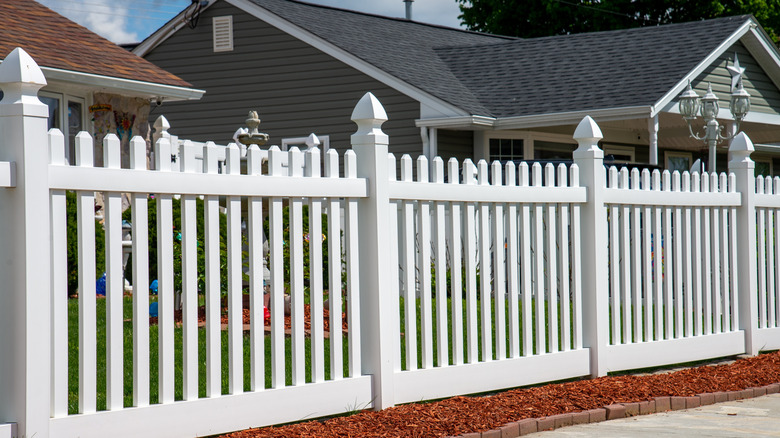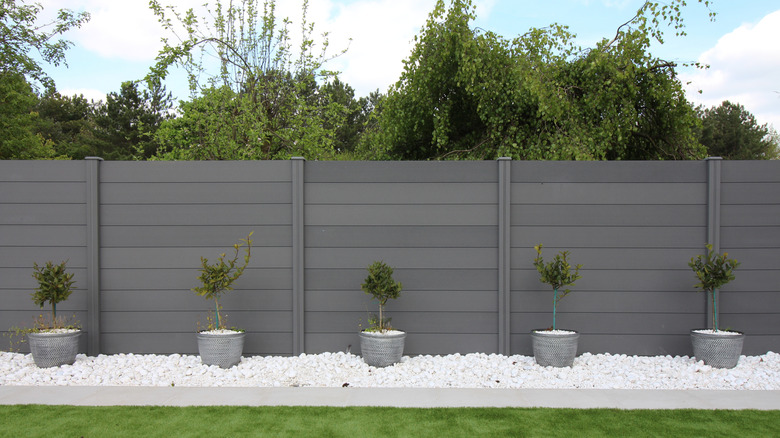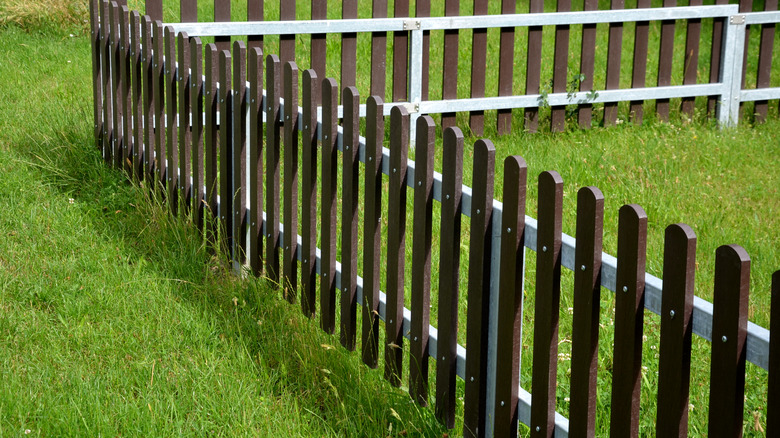The Alternative To PVC Vinyl Fencing That Some People Are Finding Way Better
It's no secret just how important a quality fence is to any property. From privacy and security to aesthetics and improved home value, there are many reasons to fence around your home. While using PVC vinyl for fencing is common, not everyone is sold on this material due to the disadvantages of PVC fences, such as cracking, susceptibility to mold, and fading over time. Hence, alternative options that don't compromise on quality or appearance, like composite fencing, are emerging. Thanks to its blend of durability, weather resistance, strength, and beauty, composite fencing has stolen the hearts of homeowners, going from just another barrier option to a must-have.
Concerning its base materials and production process, composite fencing is made from a combination of recycled plastic and wood fibers joined together by adhesives and bonding agents. The resulting mixture, also known as wood plastic composite (WPC), is then melted at a high temperature and extruded into fencing panels or poured into fencing molds and cooled. Depending on the production process, you can find two types of composite fencing panels in the market – capped and uncapped. The capped options are known for having an extra coating on the panels, thanks to a co-extrusion process. This coating in question is often made up of colorants, UV inhibitors, and antioxidants that provide extra protection against sun exposure, resulting in longer-lasting panels. As you've probably guessed, uncapped composite panels don't have this extra coating, just the pure composite material.
What makes composite fencing better than PVC vinyl?
Composite fencing has the low maintenance and durability of vinyl with the natural look and customizability of wood. You see, vinyl fences are made from plastic-based materials and while this ensures strength and easy maintenance, it's also the reason they are susceptible to damage from extreme temperature changes. Hence, PVC fences are prone to warping, cracking, or even breaking. Composite fencing is a more sturdy option that can maintain its stability. This means that these fences will remain flat and straight, even in adverse weather and temperatures. The bonding agents between the wood and plastic that make up the material add to its structural integrity and durability, making it a fence material that stays strong in heavy wind and other severe impacts.
Another major stumbling block in the use of vinyl fences is their inevitable fading. Since the fences are always out in the open, they're at the mercy of the sun's UV rays causing their colors to diminish over time. On the other hand, capped composite fence panels are fitted with UV inhibitors and other materials that provide a protective membrane against prolonged sun exposure. Better put, when you install a capped composite fence, you're guaranteed a longer-lasting lush look for your panels. However, uncapped composite doesn't hold up so well against fading, so it's best to opt for capped composite panels when you're ready to install a new fence.
More reasons to switch to composite fencing
Another area where composite fencing scores more points is its panels' eco-friendly nature. PVC fences are made from non-biodegradable materials and the production process requires fossil fuels, which means it contributes to greenhouse gas emissions. However, composite is often made from recycled or discarded wood fibers and recycled plastic. Therefore, producing composite fencing doesn't contribute to mass deforestation and excessive greenhouse emissions, making it one of the more environmentally-friendly fence choices for your yard.
Essentially, composite fencing doesn't just solve the issues of PVC fencing, it also takes its perks up a notch. Moving from PVC to composite fencing is a step up offering all the beneficial features in a better way. In terms of appearance, composite panels mimic the natural appearance of wood and are devoid of the glare common with vinyl. They also come in various colors and designs, offering more selections when it comes to customization. Additionally, maintenance is a bonus as they only need the occasional cleaning with soap, water, and a bristle brush to keep them looking good. There's also no risk of rust, rotting (thanks to limited amounts of wood), or mold build-up, and they don't need to be stained or painted to maintain their appearance. It's no wonder why people are favoring these barriers over PVC ones.


